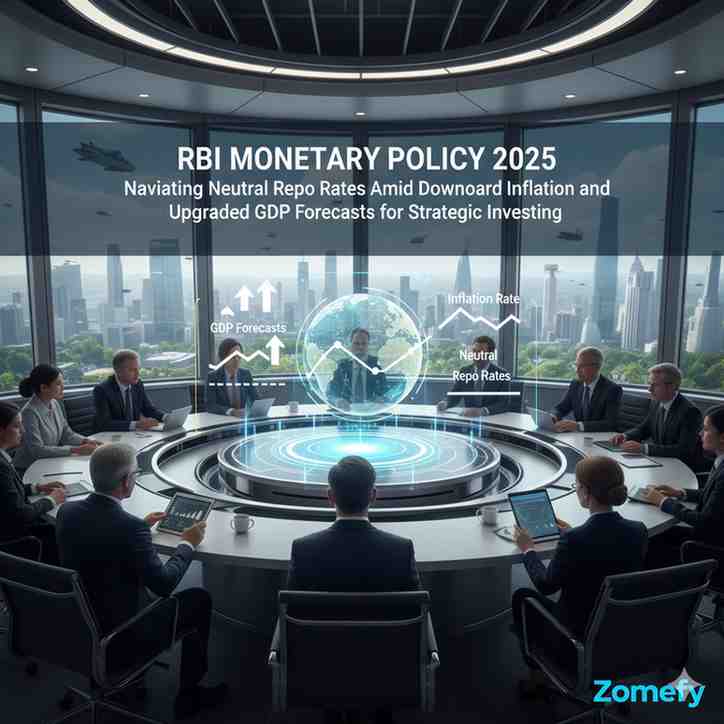Coal India Stock Analysis 2025: Surging on Delivery Volumes & Power Demand Revival Amid Crude-Led Inflation Relief
Coal India Limited (CIL), the world’s largest coal producer and a Maharatna PSU under the Ministry of Coal, remains a cornerstone of India’s energy infrastructure.
Coal India Stock Analysis 2025: Surging on Delivery Volumes & Power Demand Revival Amid Crude-Led Inflation Relief
What You Can Do Next
- Read the full article for complete insights
- Save for later reference
- Share with others learning about this topic
Image not available
Coal India Limited (CIL), the world’s largest coal producer and a Maharatna PSU under the Ministry of Coal, remains a cornerstone of India’s energy infrastructure. As India navigates a complex macroeconomic environment in 2025, marked by easing crude oil inflation and a revival in power demand, Coal India is strategically positioned to capitalize on these tailwinds. The company’s robust delivery volumes, supported by government policies and infrastructure investments, have driven renewed investor interest despite recent stock price volatility. This detailed analysis examines Coal India’s current financial health, operational performance, and sector dynamics, providing Indian retail investors and financial professionals with actionable insights and comparative data. We also explore key risks and valuation metrics to help stakeholders make informed decisions in the context of India’s evolving energy and regulatory landscape.
Coal India’s Financial and Operational Performance in 2025
Coal India Limited has demonstrated resilient operational performance in FY 2025, with production volumes and off-take showing significant growth amid easing crude-led inflation pressures. For the period April to October 2025, CIL reported a coal production of 385.5 million tonnes (Mt) and an off-take of 415.3 Mt, indicating strong demand from power and industrial sectors. October 2025 alone saw production of 56.4 Mt and off-take of 58.3 Mt, underscoring sustained momentum.
Financially, Coal India reported a net profit of ₹34,839 crore on net sales of ₹1,43,368 crore for the trailing twelve months (TTM), with a low debt-to-equity ratio of 0.09 reflecting a strong balance sheet. The company’s price-to-earnings (P/E) ratio stands at a modest 7.46, suggesting undervaluation relative to broader market peers. Return on equity (ROE) is robust at 35.67%, indicating efficient capital utilization. The stock price, however, has faced short-term headwinds, trading around ₹373 as of early November 2025, down approximately 2.3% over the last month due to market volatility and profit booking.
Metric | Value | Period |
|---|---|---|
| Coal Production (Million Tonnes) | 385.5 | Apr-Oct 2025 |
| Coal Off-take (Million Tonnes) | 415.3 | Apr-Oct 2025 |
| Net Profit (₹ Crore) | 34,839 | TTM |
| Net Sales (₹ Crore) | 1,43,368 | TTM |
| P/E Ratio | 7.46 | Nov 2025 |
| ROE (%) | 35.67 | TTM |
| Debt to Equity | 0.09 | TTM |
| Dividend Yield (%) | 7.10 | FY 2025 |
Key factors driving this performance include an increase in power sector coal demand due to improved electricity generation, government focus on energy security, and Coal India’s efficient cost management, with employee expenses accounting for about 32.26% of operating revenues and interest expenses under 1%. The company’s capital expenditure also rose significantly, with ₹10,076 crore spent on investing activities, a 124.63% YoY increase, aimed at mine expansion and mechanization.
Comparison with Sector Peers
In the mining sector, Coal India is the dominant player with a market capitalization of approximately ₹2,29,962 crore, vastly outpacing peers such as Gujarat Mineral Development Corporation (GMDC) and smaller coal-related companies. Its P/E ratio of 7.37 is substantially lower than GMDC’s 27.08, reflecting both valuation and growth expectations differences.
Company | Market Cap (₹ Cr) | P/E Ratio | ROE (%) | Debt to Equity | 1-Year Return (%) |
|---|---|---|---|---|---|
| Coal India Ltd | 229,962 | 7.37 | 35.67 | 0.09 | -15.82 |
| Gujarat Mineral Dev. Corp. | 18,023 | 27.08 | 10.69 | 0.02 | 58.33 |
| Austral Coke Ltd | 7 | - | 0.00 | -1.01 | - |
While Coal India’s stock has experienced a short-term price correction, its scale, dividend yield of 7.1%, and strong fundamentals make it a comparatively stable investment within the mining sector. Smaller peers exhibit higher volatility and risk, with limited profitability and higher debt in some cases. For investors seeking exposure to India's coal sector, Coal India offers a blend of steady income and long-term growth potential.
Market Dynamics: Impact of Crude-Led Inflation Relief and Power Demand Revival
The easing of crude oil prices in 2025 has had a significant ripple effect on the Indian economy, reducing input costs for industries and inflationary pressures. This macroeconomic relief has enhanced the consumption capacity of power-intensive sectors, boosting demand for coal, which remains the primary fuel source for approximately 70% of India’s electricity generation.
The Indian government’s renewed push for infrastructure development and rural electrification, coupled with improved monsoon forecasts, has further stimulated power demand. Coal India benefits directly as its coal supplies are critical to thermal power plants run by NTPC, state utilities, and private generators.
An important regulatory development includes the Ministry of Coal’s directive to ensure seamless coal dispatch and minimize bottlenecks in logistics, directly supporting Coal India’s volume growth. This is reflected in the 6%+ increase in off-take volumes in the first half of FY 2026 compared to the previous year.
Indicator | 2024 | 2025 (Est.) | Change (%) |
|---|---|---|---|
| Crude Oil Price (Brent, $/bbl) | 88 | 75 | -14.8 |
| India Power Demand (TWh) | 1,450 | 1,530 | 5.5 |
| Coal Off-take (Million Tonnes) | 780 | 830 | 6.4 |
| Coal India Coal Production (Million Tonnes) | 720 | 750 | 4.2 |
This environment supports Coal India’s strategic objectives to increase domestic coal production and reduce import dependence, aligned with India’s energy security goals. The company’s focus on mechanization and efficiency improvements in open-cast mining also enhances cost competitiveness, positioning it well amid inflation normalization.
Investors should note that while power demand revival is a positive catalyst, risks remain from regulatory changes, environmental clearances, and global commodity price volatility.
Inflation and Cost Structure Implications
The decline in crude oil prices has alleviated inflationary pressures on transportation and fuel costs, which constitute a significant portion of Coal India’s operating expenses. Historically, spikes in crude prices have increased diesel and logistics costs, squeezing margins for coal producers.
With crude oil prices dropping approximately 15% year-over-year, Coal India’s cost of coal production has stabilized, enabling the company to maintain competitive pricing while preserving profitability. Employee costs remain a significant expense but are well-managed at 32.26% of operating revenues.
Cost Component | Percentage of Operating Revenue | 2024 | 2025 | Change |
|---|---|---|---|---|
| Employee Expenses | ~32% | 31.8% | 32.26% | +0.46% |
| Interest Expenses | <1% | 0.95% | 0.85% | -0.10% |
| Logistics & Fuel | ~15% | 15.5% | 14.0% | -1.5% |
This moderation in costs, combined with higher volumes, supports Coal India’s margin expansion and dividend sustainability. Retail investors should monitor crude price trends as a key risk factor influencing Coal India’s profitability in the near term.
Investment Outlook and Strategies for Retail Investors
Coal India’s stock, currently trading near ₹373 with a 52-week high of ₹458 and low of ₹349, presents an attractive entry point for long-term investors seeking exposure to India’s energy sector. The company’s strong dividend yield of over 7% provides steady income, while growth prospects are supported by rising coal demand and government backing.
Analyst consensus and price forecasts suggest a potential upside to ₹450-470 levels over the next 12-18 months, driven by operational efficiencies and sector tailwinds. The stock’s low P/E ratio relative to the broader market indicates undervaluation, making it a value buy for investors comfortable with commodity cyclicality.
Parameter | Value | Remarks |
|---|---|---|
| Current Price (₹) | 373 | As of Nov 2025 |
| 52 Week High / Low (₹) | 458 / 349 | Price volatility range |
| Target Price (₹) | 450-470 | 12-18 month horizon |
| Dividend Yield (%) | 7.10 | FY 2025 |
| P/E Ratio | 7.46 | Undervalued vs Market |
Actionable Strategies for Retail Investors:
- Long-term Buy & Hold: Leverage Coal India’s stable cash flows and dividend income for portfolio diversification. - Staggered Buying: Enter in tranches to mitigate short-term volatility, especially around quarterly earnings. - Monitor Regulatory Updates: Stay alert to government policies on coal production, environmental regulations, and infrastructure spending. - Risk Management: Be mindful of risks including commodity price swings, global economic factors, and potential shifts towards renewable energy impacting coal demand.
In comparison with other energy stocks, Coal India offers a more defensive play with lower leverage and consistent profitability, making it suitable for conservative investors focused on steady returns.
Pros vs Cons of Investing in Coal India
Pros | Cons |
|---|---|
| Largest coal producer with dominant market share | Exposure to regulatory and environmental risks |
| Attractive dividend yield (~7.1%) providing steady income | Stock volatility with recent price corrections |
| Strong balance sheet with low debt-to-equity (0.09) | Long-term risk from energy transition to renewables |
| Beneficiary of power demand revival and inflation easing | Dependence on government policies and coal pricing controls |
| Robust operational scale and improving efficiency | Global commodity cycles may impact margins |
Disclaimer: IMPORTANT DISCLAIMER: This analysis is generated using artificial intelligence and is NOT a recommendation to purchase, sell, or hold any stock. This analysis is for informational and educational purposes only. Past performance does not guarantee future results. Please consult with a qualified financial advisor before making any investment decisions. The author and platform are not responsible for any investment losses.
Continue Your Investment Journey
Discover more insights that match your interests

Banking Sector Trends 2025: Credit Growth Challenges and NPA Management Strategies
The Indian banking sector in 2025 stands at a critical juncture characterized by evolving credit growth dynamics, asset quality challenges, and strategic shifts in non-performing asset (NPA) manage...

Best Large Cap Mutual Funds 2025: 10-Year Performance Analysis
Comprehensive analysis of top large cap funds with risk-adjusted returns vs benchmark beating performance. Compare ICICI Pru Bluechip vs Axis Bluechip vs Mirae Asset Large Cap.

India’s Commodity Crunch 2025: Decoding Gold, Crude, and Agri Price Trends for Strategic Portfolios
India’s commodity markets are at a pivotal juncture in 2025, shaped by global economic shifts, domestic policy dynamics, and evolving investor behavior.

RBI Monetary Policy 2025: Navigating Neutral Repo Rates Amid Downward Inflation and Upgraded GDP Forecasts for Strategic Investing
The Reserve Bank of India (RBI) has maintained a neutral stance on monetary policy in 2025, holding the repo rate steady at 5.
Explore More Insights
Continue your financial education journey
